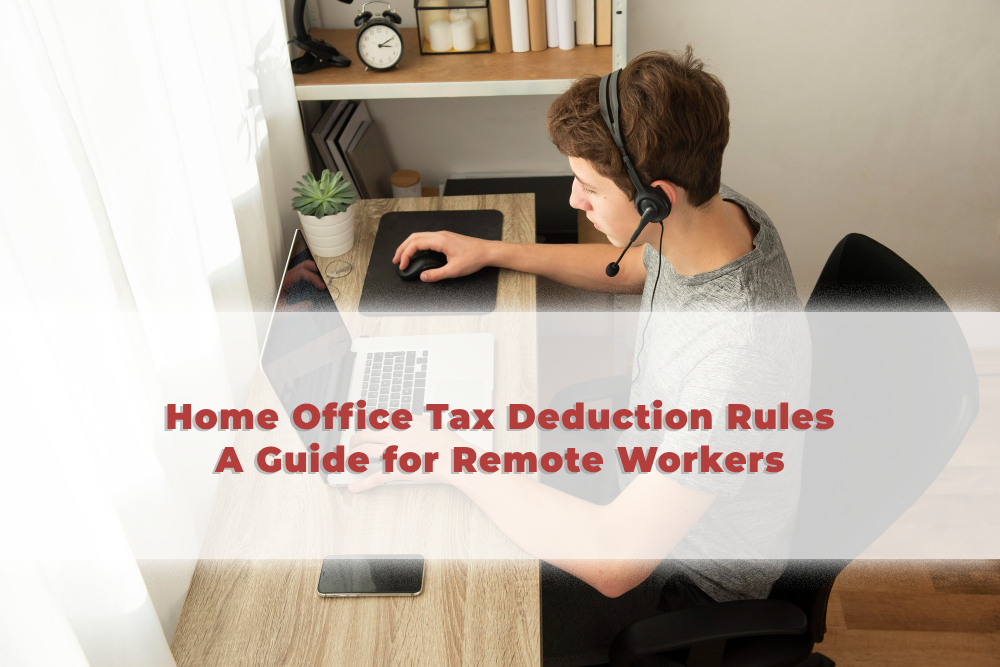Working from home has become a normal part of life for remote workers and freelancers. If you use a part of your home exclusively for work, you may qualify for a home office tax deduction. This guide will break down everything you need to know about the Home Office Tax Deduction Rules in simple terms.
What Is the Home Office Tax Deduction?
The home office tax deduction allows you to deduct certain expenses related to the portion of your home used for business purposes. This deduction can help reduce your taxable income and save you money at tax time.
To qualify, your home office must meet two primary criteria:
- Exclusive Use: The space must be used only for business.
- Principal Place of Business: Your home office must be your primary place of conducting business activities.
Who Can Claim the Deduction?
- Freelancers and Self-Employed Individuals: You can claim the deduction if you work for yourself.
- Remote Employees: If you work for a company, you are not eligible unless you are required to work from home for the convenience of your employer and do not have a dedicated office space elsewhere.
Types of Expenses You Can Deduct
There are two types of expenses you can deduct under the Home Office Tax Deduction Rules:
- Direct Expenses: These are costs specifically for your home office, such as painting or repairs to that space.
- Indirect Expenses: These are costs for your entire home, such as rent, utilities, and insurance. Only the percentage of these costs that apply to your home office can be deducted.
Methods for Calculating the Home Office Deduction
- Simplified Method:
- Deduct $5 per square foot of your home office, up to 300 square feet.
- This method is quick and easy but may result in a smaller deduction.
- Regular Method:
- Calculate the percentage of your home used for business.
- Deduct actual expenses, such as utilities, property taxes, and home maintenance.
- Example: If your home office takes up 10% of your home, you can deduct 10% of your eligible expenses.
Common Mistakes to Avoid
- Failing the Exclusive Use Test: If you use your office space for personal activities, you can’t claim it.
- Not Keeping Receipts: You need to keep proof of your expenses, such as utility bills or receipts for home repairs.
- Miscalculating Space: Ensure you measure your home office correctly and only include the space used exclusively for work.
Examples of Deductible Expenses
- Rent or Mortgage Interest
- Utilities (electricity, internet, water)
- Home Repairs and Maintenance
- Property Taxes
- Homeowners or Renters Insurance
You may also like to read:
10 Essential Tax Tips Every Freelancer Should Know to Boost Savings and Avoid Penalties
Being a freelancer comes with many perks, including flexibility and independence. However, managing taxes can be a challenge. To make …
Read More

IRS Links and Resources
For more detailed information, check the official IRS guidelines:
Benefits of Claiming the Home Office Deduction
- Lower Taxable Income: Reduce your overall tax bill by deducting eligible expenses.
- Encourages Record Keeping: The deduction requires you to track expenses, which can also benefit your business in other areas.
- Ease with IRS Tools: Using the simplified method can save you time and effort.
Tips for Staying Compliant with IRS Rules
- Document Everything: Maintain a log of business activities and receipts.
- Photograph Your Office: If the IRS audits you, having a picture of your workspace can serve as proof of exclusive use.
- Consult a Professional: A tax professional can help you navigate the rules and maximize your deduction.
Key Takeaways
- The Home Office Tax Deduction Rules offer significant tax savings for those who qualify.
- Ensure your home office meets the exclusive and principal use criteria.
- Keep detailed records and receipts to support your claim.
- Use the simplified or regular method to calculate your deduction, depending on your situation.
With proper planning and record-keeping, claiming the home office deduction can be a straightforward way to reduce your tax bill.




